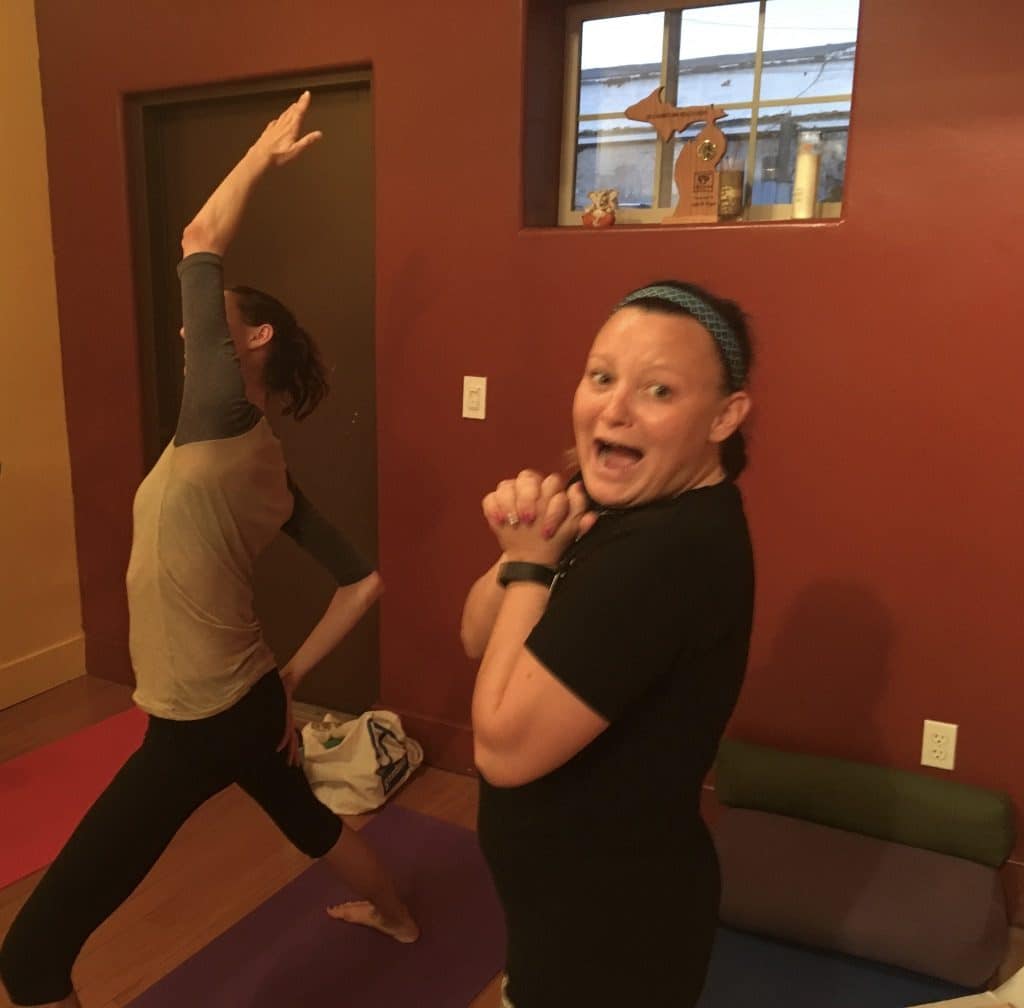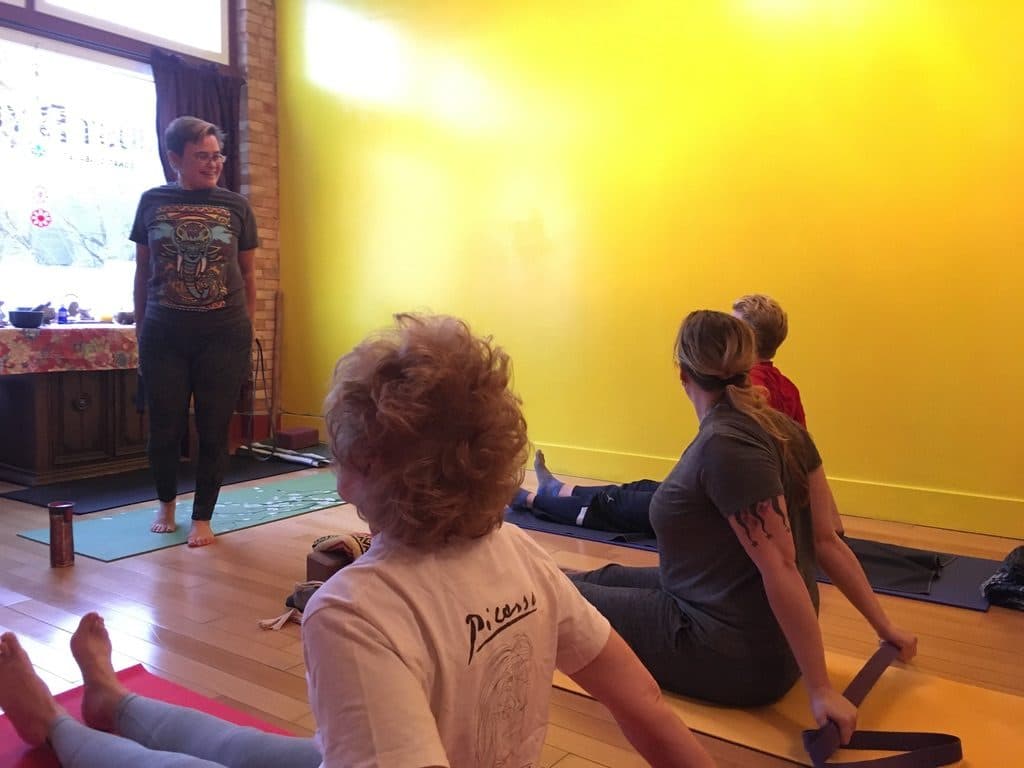If you approach your yoga or meditation practice – any conscious-elevating experience – with a result-oriented mind-set you’ve already missed the point.
Make a mistake.
I want students to feel that stumble in one-legged poses.
I encourage folkx to allow that trembly, shaking feeling when their core is exerting in boat pose and it’s hard.
I celebrate the hesitance in an upside down position or arm balance that introduces the mind and body to something foreign and frightening.
That’s where the connections are being made. That’s the yoking. That’s the yoga.
I’m not wishing “failure” or being mean. I want students to approach their practice as play. My tai chi sifu always said we played tai chi, not performed it. She said play the tai chi form as if it were music, but also play tai chi with play in mind as an innocent child.
When we rolled down a hillside as children we weren’t perfecting anything. We just felt the sensation of grass on our sides, the sight of the clouds as our heads rolled, and the constant giggling. And if we stopped midway down the hill we just started again, or sat with a smile, picked a dandelion or chatted with friends.
In yoga we should bring that same playful and curious spirit.
It’s not the “perfect” or deepest stretch. It’s not the photoshopped bliss on a beach in the Caribbean.
That is the illusion. That’s the myth.
The yoga journey is in practicing sensory experience in new ways; ways that ultimately help our mind to connect to conscious experience in new ways.
We are not perfecting that experience, but practicing it again and again.
The so-called mistakes or failures in yoga postures (“I’m not good at balancing”, “I’ve never been able to get a deep backbend.”) or meditations (“I just can’t turn my mind off”) aren’t mistakes – they are the practice. You’re in it. You’re doing it.
In all of it’s perfect imperfections.
It’s right there teaching you about your patience, your desires, your ego, your obstacles, your fears and your wounds.
There’s pros and cons about studio classes and group environments when it comes to these conscious-elevating practices. In groups, we tend to compare and contrast. We also imprint on the model of the teacher’s practice – the so-called “expert.”
These environments can create pressure and amplify self-doubt or negative self-talk for the novice and untrained mind.
Yoga isn’t a group activity actually. It’s a personal and intimate journey with the body and the mind. Home and private practice must be developed eventually for deep growth on the path.
Yoga isn’t and shouldn’t be something we want to get good at, or a term I detest, “master.”
It’s a practice of applied humility and openness to what is revealed.
What is revealed truly when our legs are on fire in a posture? What is revealed really when we wobble in a tree pose? What is revealed when we don’t feel much movement in a twist? What’s revealed when there’s a LOT of movement in that twist?
Sutra 1:3 says yoga helps us see ourselves more clearly.
We don’t always like what we see or what is revealed. (Or we may get prideful or arrogant and need to see that equally clearly.)
And frankly once confronted with even some tiny truth like the work it takes to calm our mind and the gunk that’s in the way… we quit.
We say “Yoga isn’t for me,” or “I’ve tried meditation and it doesn’t work,” or more succinctly, “It’s hard.”
Yes, the pursuit of bliss and peace and ease, is hard.
And we’re going to make mistakes or fail when we try it out.
But like the proverbial bicycle, we dust ourselves off and get back on. And remember to play and be joyfully curious.
I’ll never do the Tour de France or win it for that matter, but I keep getting on my bike and learn something each time I pedal and coast and hit bumps and… fall. I don’t stop getting on the bike and I’m also not getting on it to prove anything or master anything. I open myself to the sunshine, the breeze, my connection to the elements, feeling my body collaborate and negotiate with the machine and gravity and velocity
Let your yoga practice help you step into the unfamiliar or difficult and notice your reactions to it and play with finding an ease. And if that means you’re on a “20-year plan,” like my friend and student Kim would say, so be it.
This isn’t a performance art. It’s not a competition. There is no #winning at yoga.
Let’s try #playing yoga.

